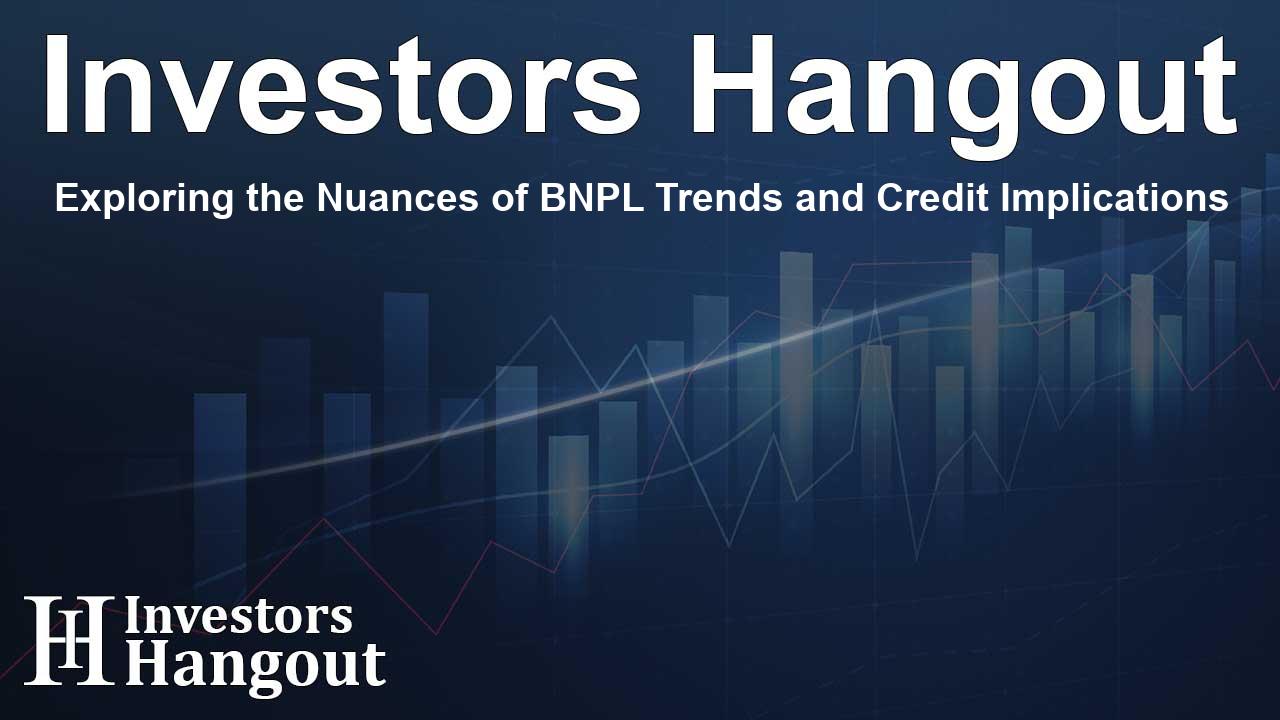Exploring the Nuances of BNPL Trends and Credit Implications

Equifax and Qlarifi Collaboration on BNPL Impact Study
Equifax, a leader in global data and analytics, and Qlarifi, innovators in real-time consumer credit databases, are joining forces to explore the effects of Buy Now, Pay Later (BNPL) on credit risk and fraud prevention.
Understanding the Rise of Buy Now, Pay Later
Recent surveys demonstrate that over 50% of consumers are utilizing BNPL options to make purchases, with a notable 35% indicating their intentions to increase usage moving forward. With this surge, Equifax and Qlarifi acknowledge an urgent need for comprehensive research on the implications of real-time BNPL data on credit assessments.
The Groundbreaking Study
The collaborative effort between Equifax and Qlarifi aims to be the first comprehensive study in the U.S. analyzing the effects of real-time BNPL reporting. It will focus on measuring the influence of BNPL reporting on credit risk evaluation and enhancing fraud prevention strategies.
Qlarifi's Innovative Platform
Qlarifi is specifically designed to cater to short-term credit needs, providing lenders with an easy and secure method to track BNPL transactions as they occur. This innovative platform empowers lenders with real-time insights, enabling them to identify potential lending risks while ensuring a clearer picture of consumer borrowing practices.
Expert Insights on Industry Needs
Jake Osborne, Senior Vice President at Equifax, emphasizes the study's potential to uncover essential trends in BNPL usage. He indicates that this partnership could help mitigate the risks associated with loan stacking, thereby creating a landscape where BNPL data enhances consumer protection by catching early signs of financial distress.
The Importance of Real-Time Data
The need for accurate and up-to-date data is becoming paramount for lenders as they refine their offerings. Traditional credit reports provide significant insights into a consumer's credit history; however, lenders are striving for a more holistic understanding of the consumer landscape. The ongoing study seeks to reveal how BNPL data can not only aid in outfitting lenders with clearer insights but also enhance overall consumer accessibility to credit.
Addressing Lender Challenges
According to Alex Naughton, the CEO of Qlarifi, the implications of this joint study are vast. With real-time data flowing from multiple BNPL providers, it allows organizations to adapt to the changing needs of both lenders and consumers efficiently. By providing more transparent views into BNPL behaviors, credit decisions can be enhanced significantly.
The Future of Credit Assessments
As the adoption of BNPL continues to rise, the insights derived from the study will be invaluable. By closely examining the predictive capabilities of BNPL data, Equifax and Qlarifi aim to demystify the decisions that require nuanced insight into both credit histories and current consumer behaviors.
Organizations Committed to Innovation
Equifax and Qlarifi are committed to fostering innovation in the FinTech landscape. For further details on how Equifax supports financial technology companies through innovative strategies and resources, visit Equifax.com. Similarly, Qlarifi is dedicated to enhancing lending decisions with their cutting-edge solutions.
Frequently Asked Questions
What is the focus of the Equifax and Qlarifi study?
The study primarily investigates how Buy Now, Pay Later data impacts credit risk assessments and aids in fraud prevention.
How does Qlarifi support lenders?
Qlarifi provides real-time insights into consumer BNPL usage, enabling lenders to make informed decisions based on current data.
Why is real-time data critical in the lending industry?
Real-time data offers lenders immediate insights into consumer behaviors, helping them better assess risk and tailor their offerings.
What are the benefits of BNPL for consumers?
BNPL can provide consumers with greater access to credit and flexibility in managing their purchases without straining their finances.
How will the study help identify loan stacking?
The study aims to detect patterns of loan stacking by leveraging real-time data, which could mitigate risks associated with excessive borrowing.
About The Author
Contact Evelyn Baker privately here. Or send an email with ATTN: Evelyn Baker as the subject to contact@investorshangout.com.
About Investors Hangout
Investors Hangout is a leading online stock forum for financial discussion and learning, offering a wide range of free tools and resources. It draws in traders of all levels, who exchange market knowledge, investigate trading tactics, and keep an eye on industry developments in real time. Featuring financial articles, stock message boards, quotes, charts, company profiles, and live news updates. Through cooperative learning and a wealth of informational resources, it helps users from novices creating their first portfolios to experts honing their techniques. Join Investors Hangout today: https://investorshangout.com/
The content of this article is based on factual, publicly available information and does not represent legal, financial, or investment advice. Investors Hangout does not offer financial advice, and the author is not a licensed financial advisor. Consult a qualified advisor before making any financial or investment decisions based on this article. This article should not be considered advice to purchase, sell, or hold any securities or other investments. If any of the material provided here is inaccurate, please contact us for corrections.
